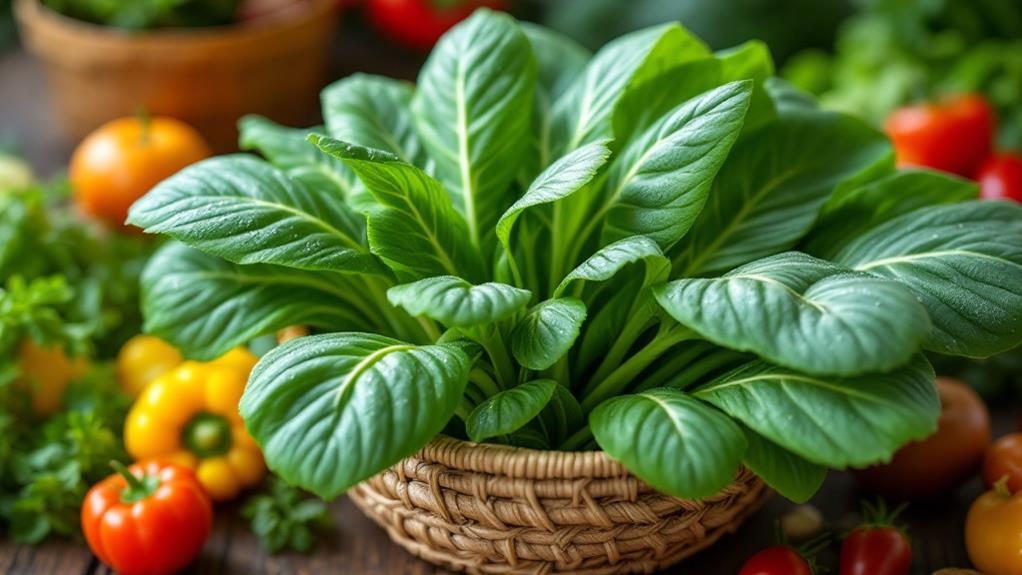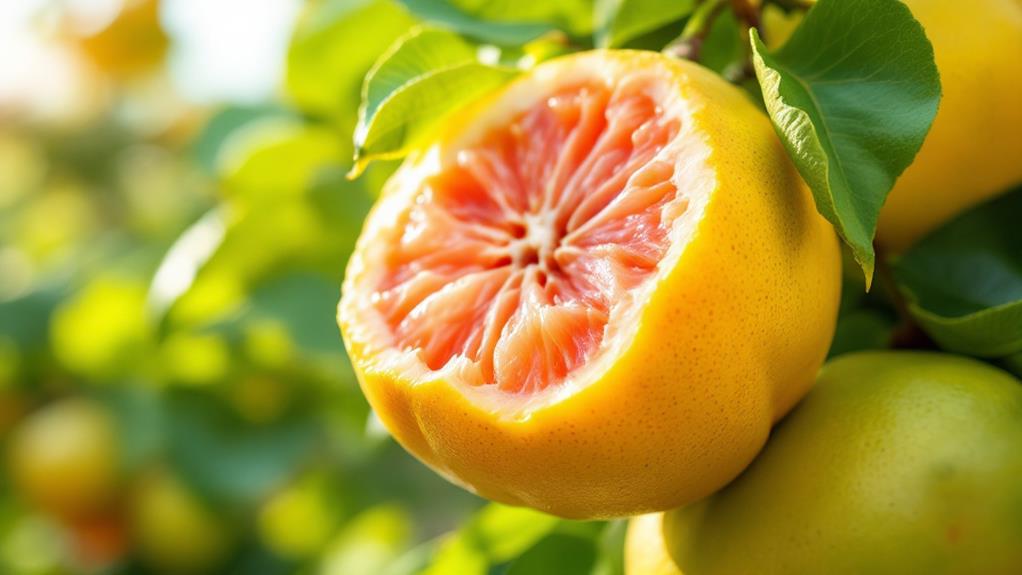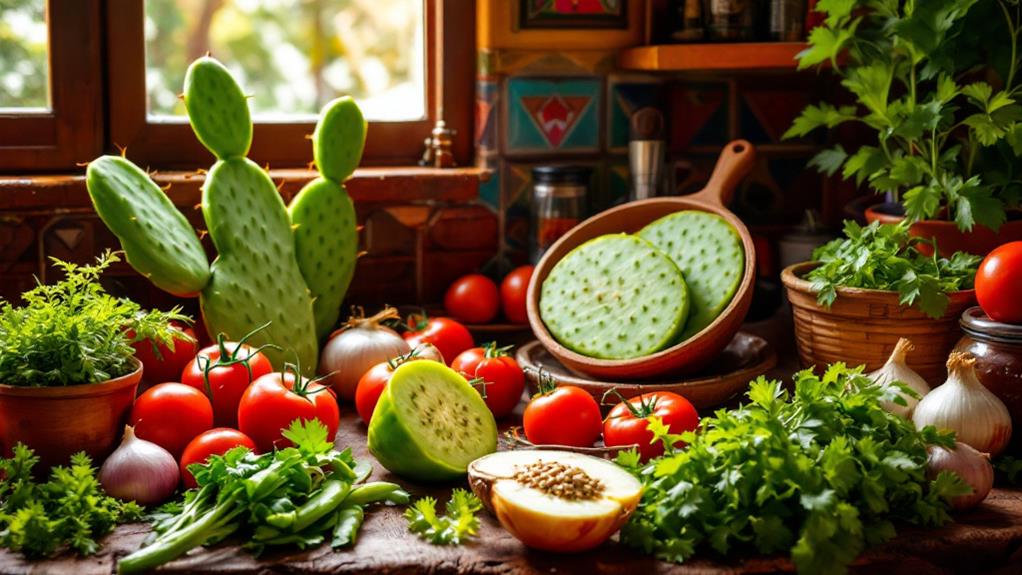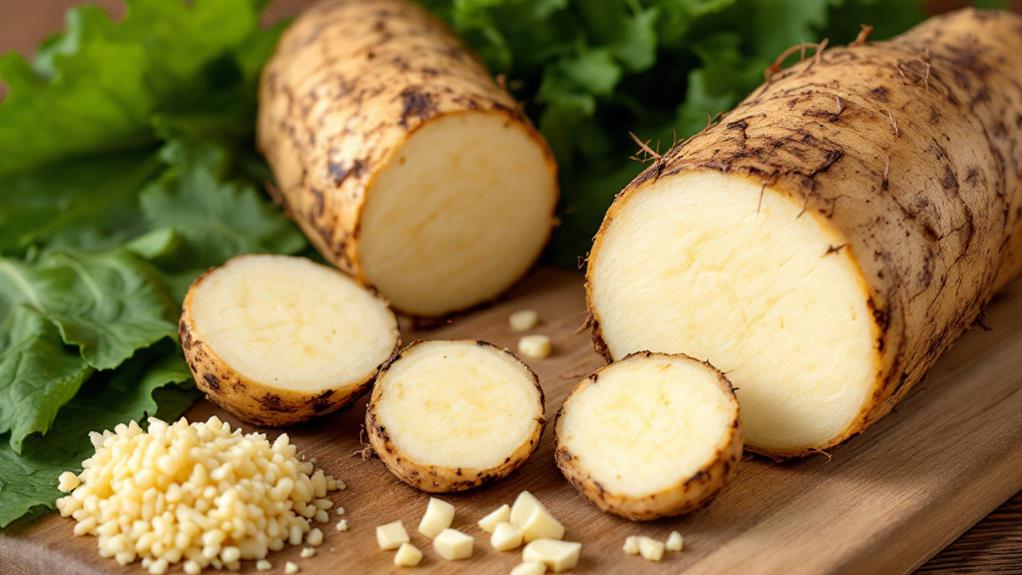Everything About Arenga Pinnata: Uses and Nutritional Value
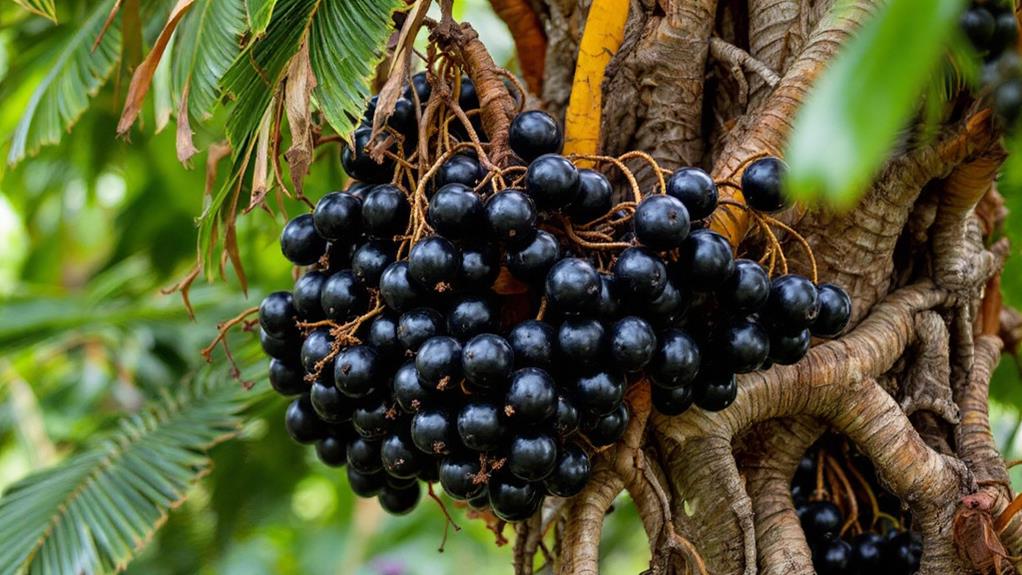
You'll find that Arenga Pinnata, or sugar palm, is a remarkable tree native to Southeast Asia with a wide range of uses. Its sap, rich in natural sugars and minerals, is perfect for making syrup, jaggery, and even traditional alcoholic drinks. The young leaves and seeds are edible, offering a good dose of vitamins, while the fruit contributes healthy fatty acids. Besides culinary marvels, it provides fibers for crafts and construction materials. Environmentally, it supports biodiversity and helps stabilize soils. Interested in how this tree supports communities both nutritionally and economically? There's a lot more to uncover.
Arenga Pinnata Overview
Arenga pinnata, known as the sugar palm, is a fascinating and adaptable plant found in tropical Southeast Asia, especially in the Philippines and Indonesia. This medium-sized, unbranched palm can soar up to 20 meters tall. Its trunk is distinctively covered with rough old leaf bases, making it easily recognizable. The sugar palm's pinnate leaves, which can grow between 6 to 12 meters in length and 1.5 meters in width, give it a lush and tropical appearance.
One of the most remarkable features of the sugar palm is its economic significance. The sugary sap produced by the palm is highly valued and used in making a variety of food products, including sugar and alcoholic beverages. Incredibly, it can yield over 20,000 liters of sap in just three years, showcasing its productivity. Besides its economic uses, the sugar palm also plays an essential ecological role. It contributes to local biodiversity and provides food for endangered species. Culturally, it's an integral part of local traditions and festivals like the Irok Festival in the Philippines, highlighting its importance in daily life and community events.
Nutritional Profile
The sugar palm, Arenga pinnata, offers a nutritional profile that's as impressive as its towering height. The sap of this palm is a goldmine of natural sugars, boasting a sugar content of about 20-25%. This makes it ideal for producing jaggery or syrup, which can be a healthier alternative to refined sugars. You'll find that the boiled sap isn't just sweet but also packed with trace minerals like calcium, potassium, and iron, which can improve your diet.
Moreover, the young leaves and immature seeds of the sugar palm are edible and are consumed for their nutritional benefits. They're rich in vitamins and minerals, providing a wholesome supplement to your meals. The fruit itself is a globose drupe containing vital fatty acids and carbohydrates, offering substantial dietary value.
Beyond its basic nutritional offerings, the sugar palm is recognized for its potential health benefits. Its natural antioxidant properties can contribute to better health, and it has been traditionally used in managing different ailments. So, if you're looking to elevate your nutrient intake, the sugar palm is a remarkable and beneficial choice to ponder.
Culinary Applications
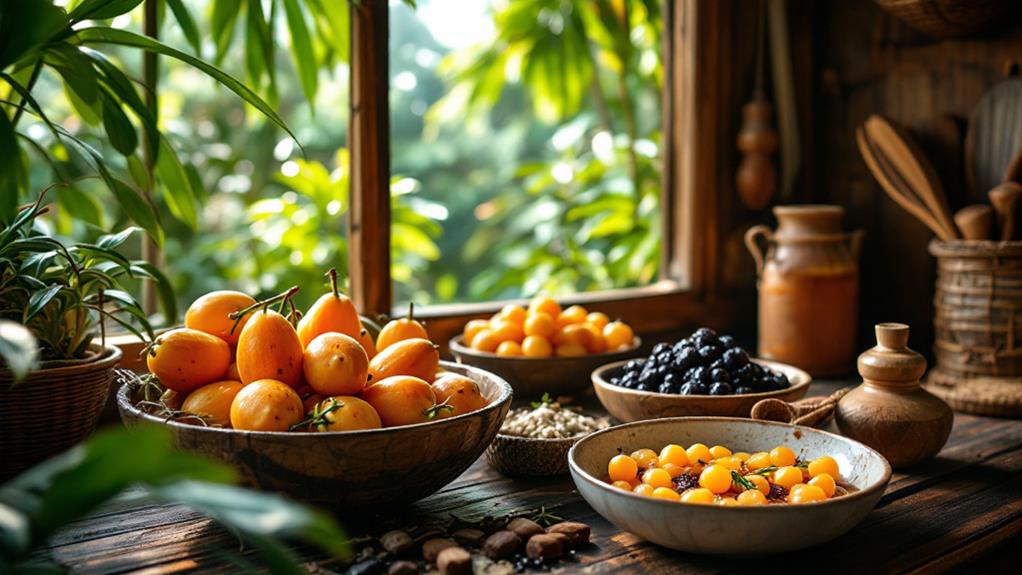
Have you ever wondered how the sugar palm can transform your culinary experiences? This remarkable tree, Arenga pinnata, offers a variety of culinary applications that are sure to enhance your dishes. To begin, consider the sugar palm's sap, which is a sweet gem. You can process this sap into brown sugar or syrup, providing a natural sweetener perfect for baking or drizzling over pancakes. In regions like North Sulawesi, you can yield an impressive 70 kg of sugar per hectare per day.
The sugar palm's young leaves and immature seeds are also culinary delicacies. These parts of the tree resemble palm cabbage and can be used to create unique salads or side dishes. The boiled seeds, known as kolang kaling, turn into a popular dessert ingredient with a chewy texture and mild flavor, perfect for fruit salads or sweet soups.
Here's a quick rundown of sugar palm's culinary offerings:
- Sap: Process into brown sugar or syrup.
- Young Leaves: Use in salads or as a vegetable.
- Kolang Kaling: Add to desserts for texture.
Traditional Beverages
While the sugar palm improves your culinary endeavors, it also holds a spot in the domain of traditional beverages. One of its most cherished contributions is tuak, an alcoholic beverage made from the fermented sap of the sugar palm's inflorescence. This drink, with an alcohol content of 2-3%, is a beloved part of many Southeast Asian cultures. It's not just about the alcohol; it's about the rich tradition and community that comes with it.
The sap, known as puso lolon, is carefully tapped to guarantee maximum yield, offering over 20,000 liters of juice in three years. This process allows you to investigate different flavors—whether you enjoy it as a freshly fermented drink or prefer boiling it down into a syrup or drying it to make brown sugar. Your choice can reflect either a cultural preference or a culinary curiosity.
In several regions, you'll find festivals celebrating the sugar palm and its products, underscoring its importance in local economies and traditions. So, when you sip on tuak, you're not just tasting a drink; you're experiencing a piece of cultural heritage that has been cherished for generations.
Industrial Uses

Among the many valuables of Arenga pinnata, its industrial uses stand out for their versatility and economic significance. You'll find the fibers, known as ijuk, are incredibly durable and have impressive tensile strength, making them perfect for a range of applications. They're commonly used in:
- Cordage and Ropes: Ideal for producing strong, long-lasting ropes and cords.
- Roofing Materials: Provides a sustainable alternative for roofing, especially in areas prone to harsh weather.
- Composite Reinforcement: Improves the strength of composite materials in construction and manufacturing.
Additionally, the sap from Arenga pinnata is processed into a sweet syrup or jaggery, which is a staple in the food industry for its rich flavor. This not only supports local farmers in Southeast Asia but also stimulates the region's economy.
The wood of this palm is another asset, highly valued in furniture and construction due to its resilience. It's a go-to for flooring and structural components. By exploring the biomass of Arenga pinnata, you can tap into biofuel production, providing a renewable energy source. Beyond this, the leaves are used in traditional handicrafts, promoting cultural heritage and local craftsmanship.
Environmental Impact
Arenga pinnata not only holds industrial value but also leaves a significant mark on the environment. As a native species in Southeast Asia, the sugar palm supports local biodiversity by providing habitat and food for diverse wildlife, including endangered species like cloud rats. Its presence strengthens the ecosystem, making it an essential component of environmental sustainability.
By cultivating sugar palms, you can help stabilize soil and reduce erosion in tropical regions. This natural process improves ecosystem health and keeps the land fertile and productive. While the red palm weevil can pose a threat, the palm isn't considered endangered, indicating its robustness and adaptability in its native environment.
Sustainable harvesting of Arenga pinnata sap and fruits aligns with traditional practices, promoting responsible land use. By adopting these methods, you're ensuring that environmental integrity is maintained, which is important for long-term sustainability. Additionally, the potential for biofuel production from the palm's raw juice offers an alternative energy source. This could reduce reliance on fossil fuels, further strengthening environmental sustainability by lowering carbon emissions. By embracing the ecological benefits of Arenga pinnata, you're contributing to a more sustainable future.

